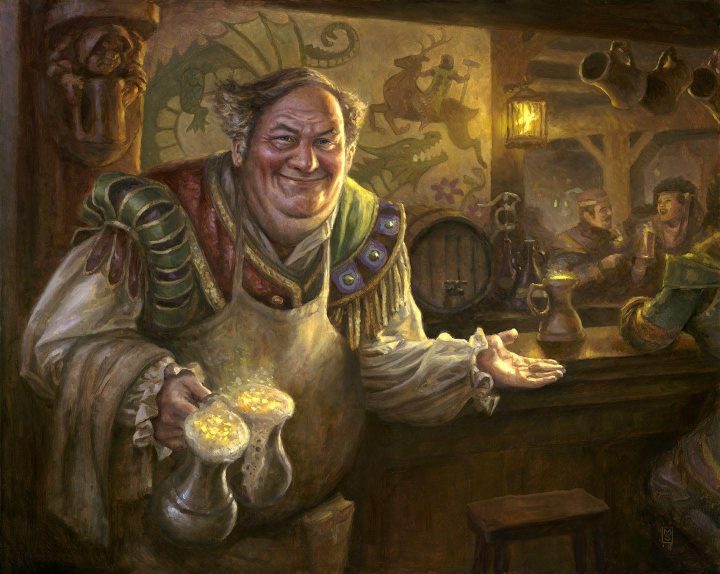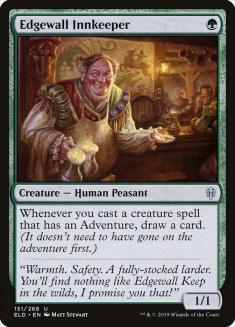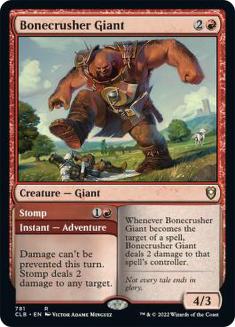Normally, preview season is the most optimistic time for Magic players. It’s a time when all of us get to explore the cards that excite us with the belief that, if we find the right home, they can become the next big thing. That optimism is quickly crushed once the set goes live on Arena and Magic Online, when the ruthless gauntlet of Leagues and the ladder filter out the worst-performing decks, but we get a few weeks when we get to entertain all of our wild ideas.
But Strixhaven has been quite different. The normal excitement has been replaced by quiet resignation as most players have accepted that this set isn’t as powerful as the rest of Standard, especially Throne of Eldraine. As a result, it seems like there isn’t going to be a big shakeup to Standard, and instead we’ll see some change on the margins.
You can see this resignation in the reduced focus on Standard in preview season articles, and an increased look at other formats. Players are searching further to find places where this set can make an impact because they don’t see it happening in Standard.
If this were the summer set, then I wouldn’t be worried. There are only a couple of months until rotation at that point, which is guaranteed to fundamentally reshape the format. But it’s only spring. We have six more months until we’re finally rid of Throne of Eldraine, one of the most powerful sets for Standard ever printed. Standard is already the most important format for competitive Magic, and without paper tournaments it has only increased in importance. Frankly I don’t want to play and watch the same format until October.
Unless we’re all missing something about Strixhaven, something has to change. The Magic Pro League and Rivals League Weekends have had many problems, but one of them is playing irrelevant and stale formats, making for a poor viewing experience. That problem will only get worse. I know we’re not far removed from a pile of Standard bans, but that looks like the only possible solution. The financial hit is minimized without paper events, and it’s more important that we have dynamic, interesting metagames to play and watch, especially since we have a glimmer of light at the end of the pandemic tunnel, and we want players to be excited to get back to paper events when they come back.
While there aren’t any cards that are as dominant as Omnath, Locus of Creation or Wilderness Reclamation, there are two cards that I think contribute to the overall staleness that we’ve seen in Standard over the last six months. The first is Edgewall Innkeeper, a key piece in myriad decks built around the powerful Adventure mechanic, and Bonecrusher Giant. Both have been ubiquitous in Standard since they were printed and I think their removal from the format would allow space for a more varied metagame.
I’ll begin by arguing why each of them individually is a problem, and then close with some remarks on the Adventure mechanic as a whole.
The Best One-Drop in Standard
There are sixteen color combinations in Magic that include green. If you subtract the four- and five-color combinations you’re left with eleven. And nearly all of those have been featured in some kind of Adventure deck with Edgewall Innkeeper as the main draw. From Golgari to Temur to Selesnya, Innkeeper is the common denominator. I’m struggling to recall the last one-mana creature that struck as much fear in the hearts of its opponents. Innkeeper demands an answer or it will run away with the game, and at one mana, you don’t have to worry about losing out on mana in a one-for-one exchange.
That combination of low opportunity cost and high potential is the heart of Innkeeper’s power. The only time Innkeeper underperforms is when you simply don’t draw Adventure creatures. It’s also powerful because it offers card advantage precisely when you’re playing to the battlefield. Therefore it’s diversifying your investments, leaving you less vulnerable.
If Edgewall Innkeeper created creature tokens or something similar to merely compound your battlefield presence, it would be particularly vulnerable to sweepers. On the other end of the spectrum, endless card advantage without affecting the battlefield leaves you vulnerable to aggression, since you need more time to deploy those extra cards.
Standard over the last five or so years has largely been about trying to navigate this dichotomy, so cards that provide card advantage while also affecting the battlefield have been particularly powerful. You can put Courser of Kruphix; Chandra, Torch of Defiance; and Uro, Titan of Nature’s Wrath on this list, and Innkeeper goes right beside them.
I suspect cards like Drannith Magistrate were meant to keep Adventure cards in check, but shutting down half of a card with two modes is not sufficiently disruptive. You haven’t shut them down, merely narrowed their options. And in the case of Drannith Magistrate, you can still cast either half – you’re just forced to remove it if you want to get both.
Despite its power, Edgewall Innkeeper hasn’t dominated Standard like some other cards I listed. However, it has had a negative impact on the metagame in that it has pushed out other forms of midrange. Midrange decks are the most interested in the dual threat of generating card advantage while impacting the battlefield. Control, aggro, and combo take a more linear approach.
Other midrange decks haven’t been able to match the power of the Adventure engine, especially when supplemented by The Great Henge, which is a flashier card than Edgewall Innkeeper but much easier to contain with early creature removal, so it has a much lower floor. With Innkeeper gone, I hope we’ll see a more robust collection of midrange decks succeed in Standard, which then opens the metagame for different forms of aggro and control that prey upon certain midrange strategies while falling to others.
In this way, I see the Adventure mechanic as quite similar to energy from Kaladesh. Rogue Refiner wasn’t an overpowering card by itself, but it, Attune with Aether, and Harnessed Lightning formed a better midrange core than anything else in its metagame, and each season was only a matter of finding the right accoutrement for it. Adventure was previously held in check by the many overpowered cards in Standard, but with those gone it’s now a cut above the rest. Fortunately there are aggro and control strategies that can contend with Adventures where that wasn’t the case for energy, but it’s still important to have a diversity of midrange strategies.
The Best Flametongue Kavu Ever
On VS Live! I’ve just started putting my two-mana creatures directly in the graveyard when Corey Baumeister is playing a Bonecrusher Giant deck. I’ve seen this script play out often enough that I want to save the time and avoid getting my hopes up.
Similarly, when I’m brewing, I include Bonecrusher Giant in essentially every deck with Mountains in it. For control decks, it’s a great early removal spell and roadblock against aggro. For aggro it’s an efficient creature that also offers a good answer to must-kill threats like Edgewall Innkeeper for decks that don’t want to play many reactive cards. And for midrange, it serves either of these purposes depending on the matchup. Only hyper-linear archetypes like Jeskai Cycling aren’t interested in it.
The power of Bonecrusher Giant is twofold. First is that normally you pay for versatility by getting a worse rate, but Bonecrusher’s rate is perfectly fine for the creature and only a mana behind on the removal spell. At that rate I think the card would be playable as a straight split card, where you only ever get one half. But you get both, and you can split up when you cast each half. The rate here was clearly pushed, and in my opinion, it was pushed too far.
More important is how Bonecrusher Giant subverts the threat-answer paradigm. A common mantra in Magic is that there are no wrong threats, only wrong answers. Any unanswered threat can win the game, even Mons’s Goblin Raiders, but a removal spell without a target sits dead in your hand. So by nature, threats have a higher floor than answers.
Bonecrusher Giant is a removal spell with reasonably high upside, since most of the time you’re casting Stomp you’re generating card advantage via the Adventure mechanic. But it also has the high floor by being a solid creature when Stomp doesn’t have a good target. That’s where the rate really comes in. We’re used to creatures like Ravenous Chupacabra, whose 2/2 body on Turn 4 is easy to ignore unless supplemented by pump or blink effects. Bonecrusher can trade effectively in combat, stop a horde of smaller creatures, or put real pressure on an opponent who was gearing up for a long control mirror.
It’s this combination of rate, consistency, and versatility that has made Bonecrusher Giant so effective. It’s far and away the best red removal spell in the format, which is a problem because it stifles the metagame churn. Normally you expect to see removal spells fade in and out of the metagame as good targets for them rise and fall in popularity. That pressure to play the right threats and the right answers for what’s popular in the metagame drives a lot of the week-to-week shifts in the Standard metagame.
But with a removal spell as powerful as Bonecrusher Giant, you lose much of that steady progression and jump to a steady state where you mostly try to play cheap creatures that survive Stomp, like Seasoned Hallowblade, or creatures that have haste so at least you can get some damage in before the exchange, like Robber of the Rich.
If we keep Bonecrusher Giant around, I fear we’ll be severely limited in our deckbuilding, especially if the next set is on par with Strixhaven in terms of power level.
Is There Another Option?
To be clear, I don’t think these two cards should be banned immediately. Wizards of the Coast (WotC) should give Strixhaven a few weeks to play out so that we can see if the prognostication from the greater competitive Magic community about its low power level is correct or not. We’ve been wrong before, and we may be wrong again.
But another season of G/X Adventures versus Dimir Rogues with a few new cards hardly sounds appealing. So they should absolutely be prepared to step in and take necessary action to ensure that we have an interesting metagame where Strixhaven is well-represented.
That said, there’s another way to mitigate the issue of imbalance in set power level moving forward — bring back the brief experiment with two Standard rotations per year. WotC experimented with this a few years ago and quickly scrapped it due to players wanting to play with their cards as long as possible. The result was that Gideon, Ally of Zendikar, among others, grossly overstayed its welcome.
It’s this combination of rate, consistency, and versatility that has made Bonecrusher Giant so effective
But now, with Historic and to a lesser extent Pioneer as places where retired Standard cards can live on, the sting of rotation is significantly lessened. And in exchange, we get rid of cards we’ve seen enough of a little bit early, allowing cards that were previously suppressed a few months to shine.
One of the reasons Magic has remained so popular over the years is the endless variety. There’s an endless number of ways to play, build decks, or otherwise engage with the game. And Magic is at its worst when it’s repetitive, when we’re seeing the same cards and same strategies over and over again. That’s what we’ve had over the last six months, even if it isn’t as extreme as in the days of Fires of Invention or Oko, Thief of Crowns.
I love the design of the Adventure mechanic and cards like Bonecrusher Giant and Lovestruck Beast are fun to play with. But only for a while. And it’s time to move on from the most egregious offenders. Unfortunately a surprise rotation isn’t tenable, but I could stomach another six months of Edgewall Innkeeper and Bonecrusher Giant a lot more easily if I knew there was a system in place to mitigate similar problems in the future.
Failing such a system, I say get them out of here.




